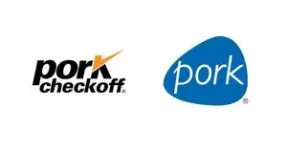The protein quality of a food or meal (i.e., the EAA content of a meal) is a major factor in determining how the body can use amino acids for muscle and whole-body protein building.2-4
The Dietary Guidelines for Americans (DGAs) puts an emphasis on consuming a variety of protein foods based on ounce-equivalent portions with similar nutritional content.5 One oz-eq equals one ounce of meat, one whole egg, 0.25 cups of beans or 0.5 ounces of nuts.6
“The basis for the DGAs stating that these protein foods are ‘equivalent’ and have ‘similar nutritional content’ is unclear,” suggests Dr. Wayne Campbell, primary investigator on this study and professor in the Department of Nutrition Science at Purdue University.
Protein foods differ in their energy and nutrient content, including protein quantity and quality (see Table 1), he adds. Additionally, there is limited information on how eating oz-eq amounts of protein foods from different sources as part of a mixed meal impacts the body’s ability to digest and use protein.
Table 1. Energy and macronutrient contents of the test meal and protein food sources, and essential amino acid content of the protein food sources.*
Energy
(kcal)
Fat
(g)
Carbohydrate
(g)
Protein
(g)
EAA
(g)
Test meal
218
11.5
25.8
6
2.09
Lean pork loin (2 oz-eq)
73
1
0
14
7.36
Whole eggs (2 oz-eq)
145
10
0
12.5
5.38
Black beans (2 oz-eq)
113
0.5
20
7.5
3.02
Almonds (2 oz-eq)
161
14
6
6
1.85
*Adapted from Connolly et al. (2023)1; The quantity of protein for each trial includes the protein from the test meal: lean pork (20 g); whole eggs (18.5 g); black beans (13.5 g); and almonds (12 g). The total quantity of EAA for each trial includes the EAA from the test meal: lean pork loin (9.45 g); whole eggs (7.47 g); black beans (5.11 g); and almonds (3.94 g). EAA—essential amino acids.
This includes within populations that may be vulnerable to a lack of variety in their protein choices, like younger adults, and who may be under consuming high-quality sources of nutrient-dense protein despite greater nutrient needs, such as older adults.5
Therefore, scientists sought to test if eating two oz-eq portions of animal-based versus plant-based protein foods as part of a mixed whole foods meal differently impacted EAA bioavailability for protein building in these populations.
Study Overview
Two cross-over randomized controlled trials were performed on 30 otherwise healthy young adults and 25 older adults. Each study participant completed four separate 300-minute trials, with each trial separated by a minimum of three days.
The study investigators were blinded to the order the participants completed their protein foods assignments until all participants finished their testing and results were analyzed.
During trial periods, study participants reported to the clinic to eat a standardized meal with two oz-eq of either animal-based protein foods (e.g., unprocessed lean pork loin, scrambled whole eggs) or plant-based protein foods (black beans, raw sliced almonds).
Blood samples were taken at baseline and 30, 60, 120, 180, 240, and 300 minutes after eating to determine EAA bioavailability as well as blood sugar and insulin levels.
Results At A Glance
“In line with our hypothesis before starting this study, consuming meals with two oz-eq of animal-based protein foods resulted in more EAAs in the bloodstream compared to meals with two oz-eq of plant-based protein foods in both young and older adults, separately and combined,” explains Dr. Gavin Connolly, clinical trials project manager and research associate in the Department of Nutrition Science at Purdue University. Also, there were no differences in EAA bioavailability between young and older adults, he adds.
This means animal-based proteins (from unprocessed lean pork loin and scrambled eggs) more effectively provide EAAs, which is linked with the ability for our bodies to build body protein or muscle, notes Dr. Connolly. “This is an important consideration for muscle and whole-body health and physical function across the life course,” he suggests.
Additional findings from this study include:
Lean pork resulted in greater EAA bioavailability than eggs in young adults or older adults, separately or combined.
There were no differences in EAA bioavailability between black beans and almonds.
There were no differences in EAA bioavailability between young and older adults.
There were limitations in the current study.
“Portion sizes of the protein foods in the study likely does not truly reflect the amounts consumed on a meal-to-meal or weekly basis by young or older adults,” according to Dr. Connolly. Additionally, there were no direct measures of changes in muscle protein synthesis or whole-body protein balance in response to the meals containing the different protein foods, he explains.
Additional research is needed to better understand how animal versus plant-based protein foods may influence muscle and whole-body health across the lifespan to promote healthy aging.
Public health nutrition implications:
The study authors suggest the findings from this research may have public health nutrition guidance implications and serve as an important resource for future DGAs to reevaluate the appropriateness of equating different protein sources in the protein foods group on an oz-eq basis across the lifespan.
“These results are also pertinent to the DGA’s recommendation to consume more plant-based foods,” adds Dr. Campbell.
While there are health benefits to consuming more plant-based foods, guidance on the importance of nutrient-dense animal-based protein foods which are high-quality protein sources is important information to incorporate when providing dietary recommendations, he explains.
Looking to translate this science into action? Check out this recipe of Italian Pork Kabobs with Summer Vegetables.
This research was funded by the Pork Checkoff and the American Egg Board—Egg Nutrition Center.
###
References:
Connolly G, et al. Effects of consuming ounce-equivalent portions of animal- vs. plant-based protein foods, as defined by the dietary guidelines for Americans on essential amino acids bioavailability in young and older adults: Two cross-over randomized controlled trials. Nutrients. 2023;15(13):2870.
Kim IY, Shin YA, Schutzler SE, Azhar G, Wolfe RR, Ferrando AA. Quality of meal protein determines anabolic response in older adults. Clin Nutr. 2018;37(6 Pt A):2076-2083.
Park S, Church DD, Schutzler SE, Azhar G, Kim IY, Ferrando AA, Wolfe RR. Metabolic evaluation of the dietary guidelines' ounce equivalents of protein food sources in young adults: A randomized controlled trial. J Nutr. 2021;151(5):1190-1196.
Church DD, Hirsch KR, Park S, Kim IY, Gwin JA, Pasiakos SM, Wolfe RR, Ferrando AA. Essential amino acids and protein synthesis: insights into maximizing the muscle and whole-body response to feeding. Nutrients. 2020;12(12):3717.
U.S. Department of Agriculture and U.S. Department of Health and Human Services. Dietary Guidelines for Americans, 2020-2025. 9th Edition. December 2020. Available at DietaryGuidelines.gov.
What counts as an ounce in the Protein Foods Group? USDA website. https://ask.usda.gov/s/article/What-counts-as-an-ounce-in-the-Protein-Foods-Group. Accessed 8/2/23.
About National Pork Board:
The National Pork Board has responsibility for Pork Checkoff-funded research, promotion and consumer information projects and for communicating with pork producers and the public. The Pork Checkoff funds national and state programs in consumer education and marketing, retail and foodservice marketing, export market promotion, production improvement, science and technology, swine health, pork safety, and environmental management and sustainability. For the past half century, the U.S. pork industry has delivered on its commitment to sustainable production and has made significant strides in reducing the environmental impact of pig farming. Through a legislative national Pork Checkoff, pork producers invest $0.35 for each $100 value of hogs sold. Importers of pork products contribute a like amount, based on a formula. For information on Checkoff-funded programs, pork producers can call the Pork Checkoff Service Center at (800) 456-7675 or visit www.pork.org.
END






